#vax 11/780
Explore tagged Tumblr posts
Text
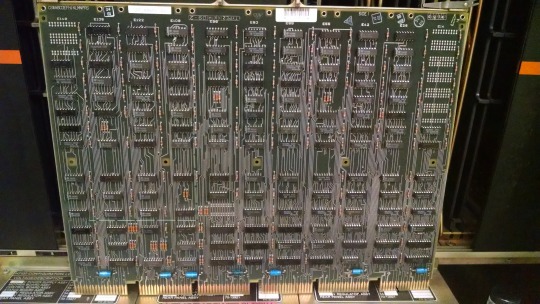
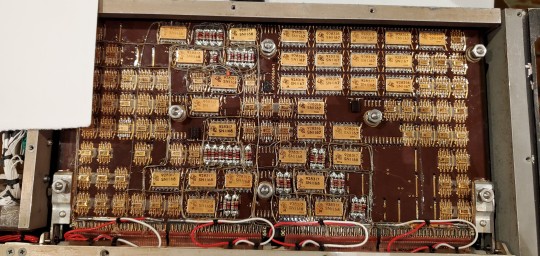
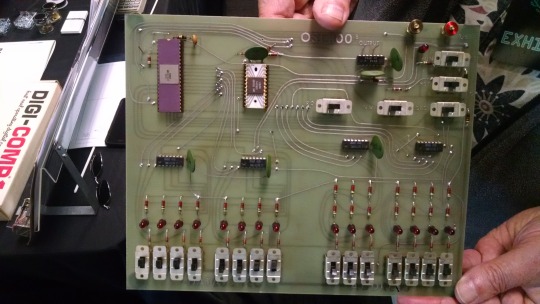
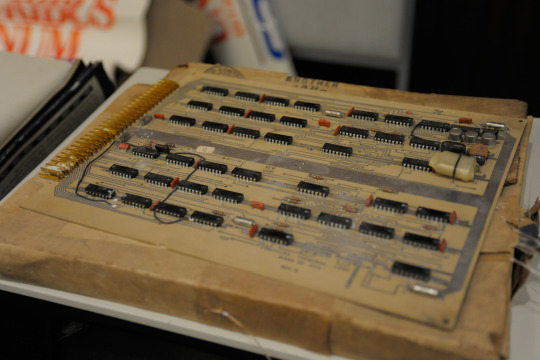

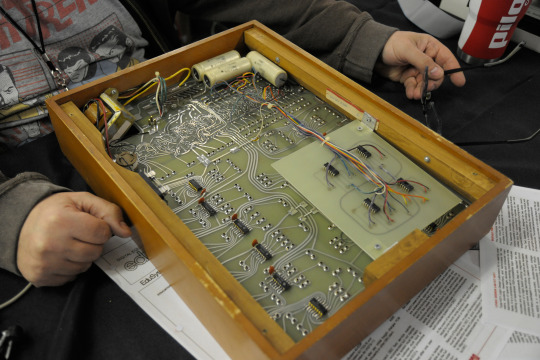
Another circuit board beauty masterpost -- been awhile since I did one of these.
DEC VAX-11/780 Honeywell Alert 1C Ohio Scientific OSi-300 Unknown piece of equipment Cheese Car Systems 32KW FeRAM Memory Module + D-116 Cassette Interface DEC logic trainer
138 notes
·
View notes
Text

Operator with VAX 11/780 computer. Via Boston Public Library.
356 notes
·
View notes
Text
We are announcing a brand new 32-bit superminicomputer
On this day, 25 October 1977, we are announcing the VAX-11/780, a brand new 32-bit computer that is instruction set compatible with our previous greatest hit, the PDP-11.
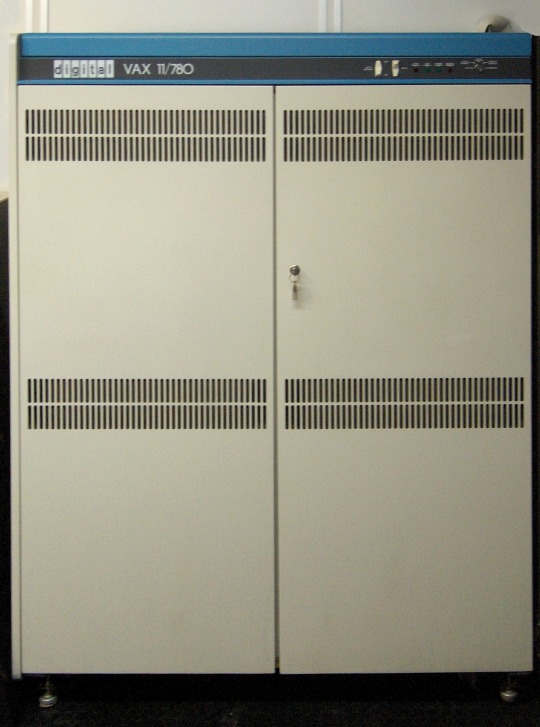
(Well it is compatible if you switch into PDP-11 emulation mode, and we will eventually remove this feature anyway)
47 notes
·
View notes
Text
https://gettr.com/post/p2oysjv41ea
(連新社) 動画 日本語字幕 1分35秒
新型コロナワクチン災害は史上最大の組織的詐欺である
新型コロナワクチン災害は史上最大の組織的詐欺であり、
今後長年に渡って世界中の人々に影響を及ぼすだろう。
Posted on 10:50 PM Aug 24th, 2023
------(引用ここまで)-------------------------------------
http://www.asyura2.com/23/iryo11/msg/693.html
その通りでしょう。
いくら、金をバラ撒いて口封じや���蔽をしたところで、科学的、医学的事実を
隠し通すことは不可能です。
(元動画)
「Ed Dowd: The COVID Vax Is “The Greatest Fraud I’ve Ever Seen in My Life” 」
(The Vigilant Fox rumble動画 2023/7/11)
https://rumble.com/v36f5vf-ed-dowd-the-covid-vax-is-the-greatest-fraud-ive-ever-seen-in-my-life.html
(関連情報)
「エドワード・ダウド氏 コロナワクチンを接種しなかった理由 (タッカー・カールソン・トゥデイ / タマホイ訳)」
(拙稿 2023/3/3)
http://www.asyura2.com/22/iryo10/msg/780.html
「エド・ダウド氏 「バイデン、シュワブはお払い箱になる。美男美女の救世主が現われるが要注意」 (BonaFidr)」
(拙稿 2023/1/27)
http://www.asyura2.com/22/iryo10/msg/575.html
2 notes
·
View notes
Text




Vol Libre (1980) by Loren Carpenter
Loren Carpenter created a two-minute color film called Vol Libre to showcase his software for rendering realistic mountains and landscapes using fractal geometry at a SIGGRAPH conference in 1980. This was the first application of fractals in a computer-generated imagery (CGI) film. Production of each frame of the film required about 20-40 minutes of computing time on a VAX-11/780 computer. Prior to this film realistic animation in films had to be done by hand, frame by frame.
0 notes
Text




Vol Libre (1980) by Loren Carpenter
Loren Carpenter created a two-minute color film called Vol Libre to showcase his software for rendering realistic mountains and landscapes using fractal geometry at a SIGGRAPH conference in 1980. This was the first application of fractals in a computer-generated imagery (CGI) film. Production of each frame of the film required about 20-40 minutes of computing time on a VAX-11/780 computer. Prior to this film realistic animation in films had to be done by hand, frame by frame.
0 notes
Text
Un día como hoy (25 de octubre) en al tecnología
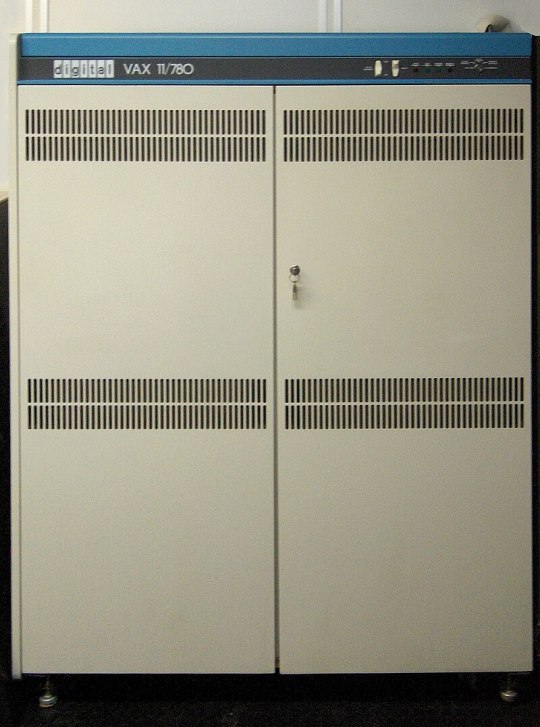
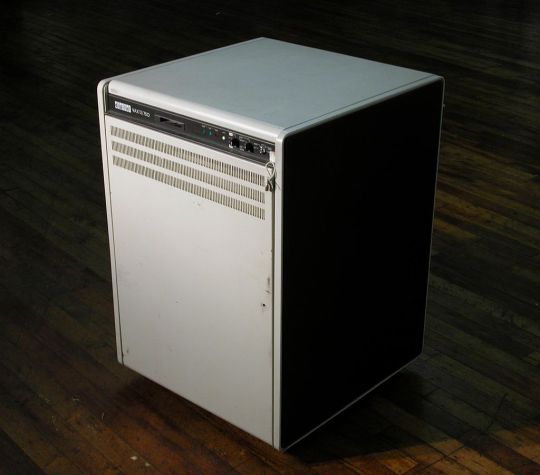
El 25 de octubre de 1977, fue comercializada la súper mini computadora VAX-11/780 de 32 bits desarrollada por DEC, con floppy drive de 6” y 128 a 4 Mb de RAM #retrocomputingmx #DEC #vax11
0 notes
Text
pop open a centerfold, my eyes pop out of their sockets and I yell "hubba hubba look at those bazoingas!" and it's a picture of a DEC VAX-11/780 with its front cabinet doors removed in a copy of BYTE.
1 note
·
View note
Photo
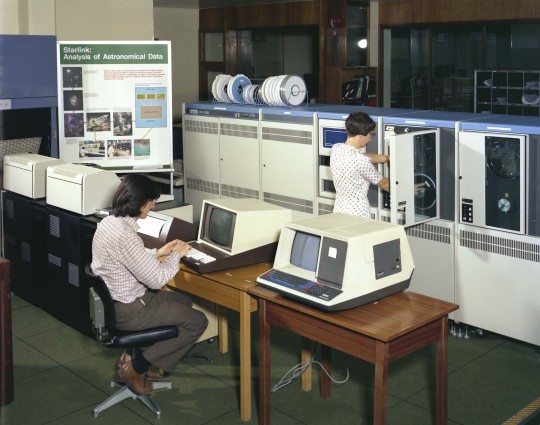
Starlink astronomical data processing system running on a DEC VAX-11/780, Atlas Centre, Chilton, Oxfordshire, 1980.
#science#technology#computers#astronomy#Starlink#Digital Equipment Corporation#DEC VAX-11/780#Atlas Centre#Chilton#Oxfordshire#England#UK#1980
223 notes
·
View notes
Photo

2 notes
·
View notes
Text
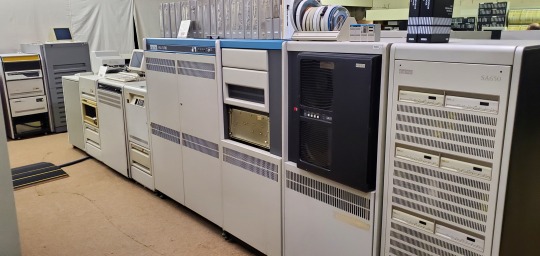
Digital Equipment Corporation VAX 11/780
Large Scale Systems Museum (LSSM) - mact.io - Pittsburgh, PA
128 notes
·
View notes
Text






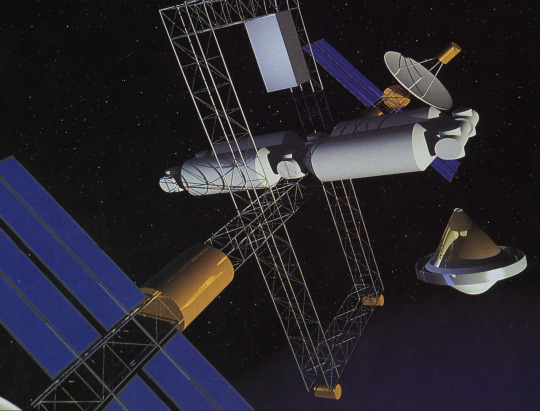



SIGGRAPH Computer Art Show July 27th - 31st, 1987
selected excerpts
Peter Voci: Displayscape
Hdw: DEC Micro-PDP 11 Sftw: CGL
Steve Dipaola: Blue Cirque
Hdw: VAX 11/785/Ikonas/Dicomed Sftw: N.Y.I.T.
Mr. Screens: Control
Hdw: Minivax PDP11/Genisco F B/Matrix QCR Sftw: Images I
Delle Maxwell: Sketches of Venice
Hdw: Ridge 32/Raster Tech F B Sftw: In-house Affiliation/Location: Pacific Data Images
Craig Caldwell: What in the World
Hdw: Marc2/VAX 780 Sftw: TWIXT Affiliation/Location: Ohio State University
Alyn P. Rockwood: Toroidal Knot
Hdw: VAX 11/780/E&S PS340 Sftw: By artist
Randy Bradley: The Light Stuff
Hdw: DG MV/10000/E&S PS300/Raster Tech 1/380/DUNN 635 Sftw: Clockworks Affiliation/Location: Rensselear Polytechnic Institute
Lucia Grossberger, B. Bishop: SpaceLace ’87
Hdw: Apple II GS Sftw: PACK developed By B. Bishop
Karin Schminke: Grid Frieze
Hdw: Mindset/Diablo C150 Prtr Sftw: Lumena Affiliation/Location: Eau Claire and University of Wisconsin
Patricia Search: Visions
Hdw: Data General MV10000/E&S PS300 Sftw: Getto-Long Ray Tracer Rensselear Polytechnic Institute
What’s the point? What is the art in a computer art exhibit? Why have this exhibit at SIGGRAPH at all? Why is it that computer art is still being “discovered”? It seems to go without saying that all these and other questions are asked each year. Nevertheless, as the SIGGRAPH ’86 Art Show so graphically illustrated in its retrospective, this “new art” has been around for at least the last twenty years. Yet, for each new Columbus, working with the computer seems to present a challenge in and of itself. A challenge independent of the product that is produced. Approaching the “medium” from every conceivable direction, the visual architect sculpts meaning and imagery from a general purpose tool with roots extending through both every computing and every visualizing device ever produced.
SIGGRAPH chair Joanne P. Culver, from the overview
#siggraph#digital art#1980s#1987#design#computer art#3D#technology#art#80s design#engineering#computer science
6 notes
·
View notes
Photo
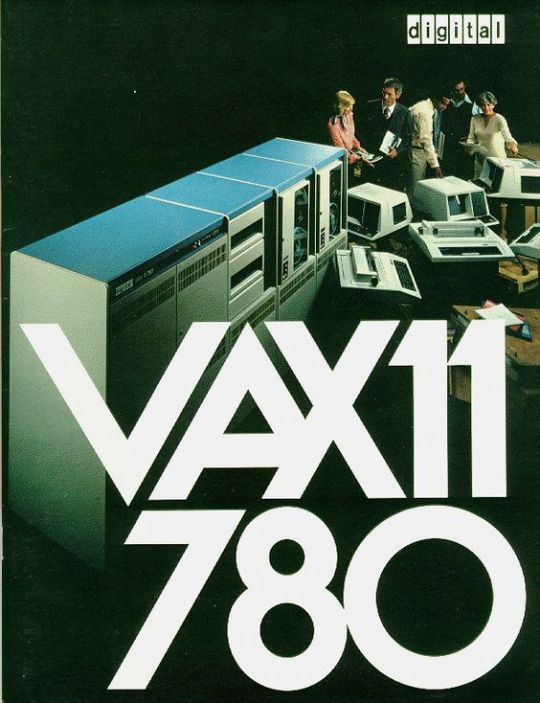
Digital Equipment Corporation VAX-11/780, 1977. https://ift.tt/2ZJbuhE
16 notes
·
View notes
Video
tumblr
Williams Defender (1981) - one of my all-time favorites! Introduced us to the concept of infinite side-scrolling, as well as mini-maps/radars and a host of challenging enemies. Williams started as a pinball company and had a pretty good audio/sound engineering dept which they leveraged for this game, the sound effects are all very unique / memorable too.
I used to play this game at University of Hartford’s student center back in the early 80′s, I was in high school at the time but was going there a couple nights a week to take an assembly programming class on their (brand new) VAX 11/780.
My mom would give me $10 for the week to spend on lunch or snacks, which I would promptly exchange for a roll of quarters - most of which went into trying to master Defender. (had to just eat when I got home I guess, don’t remember that part lol)
It was/is a super-hard game with a lot of controls. Still fun to play if you can get your emulator setup right for the buttons. (or if you are lucky enough to own an original arcade cabinet)
26 notes
·
View notes
Text
Evolution of Microprocessors 1971 to 1996
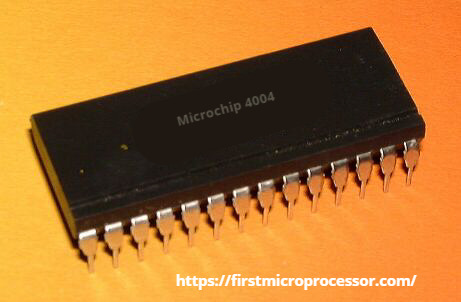
A chip fuses the elements of a PC's focal preparing unit (CPU) on a solitary incorporated circuit (IC), or probably a couple of coordinated circuits. Every single present day Cpu are microprocessor ( https://firstmicroprocessor.com/ ) making the miniaturized scale prefix excess. The microchip is a multipurpose, programmable gadget that acknowledges advanced information as information, forms it as per guidelines put away in its memory, and gives results as yield. It is a case of successive advanced rationale, as it has interior memory. Chip work on numbers and images spoke to in the double numeral framework.
Complete History of Microprocessor
1971: The First Intel 4004 Microprocessor
The 4004 was the world's first microchip, a solitary chip made and created by Intel. It was a 4-piece CPU and was likewise the most readily accessible monetarily. This advancement provoked the Busicom adding machine [1] and drove the best approach to give "knowledge" to lifeless things and furthermore on the PC.
1972: Intel 8008 Microprocessor
At first coded as 1201, was approached Intel for Computer Terminal Corporation for use in its programmable terminal Datapoint 2200, but since Intel completed the venture late and didn't meet the desires for Computer Terminal Corporation, was not decisively utilized in the Datapoint . Hence Computer Terminal Corporation and Intel concurred that the i8008 could be offered to different clients.
1974: The SC/MP Microprocessor
The SC/MP created by National Semiconductor, was one of the primary microchip, which opened up since the start of 1974 the name SC/MP (prominently known as "Scoundrel") is an abbreviation for Simple Cost-powerful Micro Processor (Single Chip and cost). Presents a location transport and 16-piece information transport 8 bits. One component, progressed for now is the ideal time, is the capacity to discharge the transports so they can be shared by various processors. This chip was generally utilized for its ease and given in packs to instructive purposes, innovative work of different modern controllers.
1974: The Intel 8080 Microchip
THE 8080 turned into the CPU of the primary PC, the MITS Altair 8800, purportedly, named for a goal from the Spaceship "Starship" network show Star Trek, and IMSAI 8080, framing the reason for machines running the CP/M-80 working framework. Supporters of Altair PCs could purchase a PC at a cost (at that point) of 395 USD. In a time of a couple of months, a huge number of these PCs were sold.
1975: Motorola 6800 Micro-CPU
Is produced by Motorola, the Motorola MC6800, known as 6800 he was discharged not long after the Intel 8080 Named after which contained around 6,800 transistors. A few of the main microcomputers during the 1970s and utilized the 6800 processor. These incorporate the SWTPC 6800, which was the first to utilize it, and the notable 680 Altair plentifully This chip utilized as a feature of a pack for driver advancement frameworks in the business. Beginning from 6800 processors different subsidiaries were made, one of the most impressive Motorola 6809
1976: Z80 Microprocessor
Zilog Inc. The organization makes the Zilog Z80. It is a 8-piece chip worked in NMOS innovation and depended on the Intel 8080 is essentially an augmentation of it, which bolsters every one of your guidelines. After a year hits stores first PC that utilizes the Z80, the Tandy TRS-80 Model 1 furnished with a 1.77 MHz Z80 and 4 KB of RAM. It is one of the best processors of the market, of which there have been numerous clonal forms, is as yet utilized widely today in many inserted frameworks. The organization was established Zilog 1974 by Federico Faggin, who was boss architect of the Intel 4004 chip Intel 8080 and later.
1978: The Intel 8086 and 8088 Microprocessor
A deal made by Intel to the new PC division of IBM, made the IBM PC Business laid extraordinary hit with the new item with the 8088, called the IBM PC. The achievement of 8088 moved Intel to the rundown of the main 500 organizations in the Fortune magazine, and named it as one of the organization's business triumphs of the sixties.
1982: The Intel 80286 Microchip
The 80286, prevalently known as 286, was the first Intel processor that could run all the product composed for its ancestor. This product similarity stays a sign of Intel group of chip. Following six years of its presentation, there were an expected 15 million 286-based PC, introduced the world over.
1985: Intel 80386 Microprocessor
This Intel processor, famously called 386, got together with 275,000 transistors, in excess of 100 fold the number of as in the first 4004 The 386 included a 32-piece engineering, with capacity to perform various tasks and a unit of interpretation of pages, which did a lot simpler to actualize working frameworks that will utilize virtual memory.
1985: The VAX 78032 Microprocessor
The VAX microchip 78032 (otherwise called DC333) is single-chip 32-piece, and was created and made by Digital Equipment Corporation (DEC); MicroVAX II introduced in gear, together with his boat isolated drifting point coprocessor, the 78132, had a limit of near 90% of that could convey the VAX 11/780 minicomputer that was introduced in 1977 This chip contained 125,000 transistors was made ZMOS Technology at DEC. The VAX frameworks dependent on this processor were favored by the logical and designing network during the 1980s.
1989: Intel 80486 Microprocessor
Producing 486 truly intended to have a PC with cutting edge highlights, including a guidance set improved skimming point unit, or FPU, an interface unit transport and upgraded reserve bound together, all incorporated into one's own microchip. These enhancements made the i486 were twice as quick as the pair i386 - i387 working at a similar clock recurrence. The Intel 486 processor was the first to offer an incorporated math coprocessor or FPU; him that quickened notably the counts. FPU unit utilizing an increasingly mind boggling scientific activities are performed by the coprocessor so the capacity for all intents and purposes free of the principle processor.
1991: AMD AMx86 Micro-CPU
AMD processors fabricated by 100% good with Intel codes that second. Called "clones" of Intel, they even beat the clock recurrence of Intel processors and fundamentally lower costs. Here the Am286, Am386, Am486 and Am586 arrangement are incorporated.
1993: PowerPC 601 Microprocessor
It is a RISC processor innovation 32-piece, 50 and 66MHz. Its plan utilized the transport interface of the Motorola 88110 In 1991, IBM looks for a collusion with Apple and Motorola to support the formation of the microchip, the AIM (Apple, IBM and Motorola) union rises whose point was to expel the area to Microsoft and Intel had in frameworks dependent on 80386 80486 and PowerPC (PPC or MPC abridged) is the first name of the processor family RISC design, which was created by the AIM Alinza. Processors this family are chiefly utilized in Macintosh PCs Apple Computer and its presentation is firmly because of its RISC design.
1993: The Intel Pentium Micro
The Pentium chip had an engineering fit for executing two activities without a moment's delay, on account of its two pipeline information 32 bits every, equal to 486DX (u) and the other proportional to 486SX (u). Besides, it was furnished with an information transport of 64 bits, and permitted access to 64-piece memory (however as yet keeping the processor 32-piece support for inner tasks, and records were likewise 32 bits). The MMX forms including not just gave the client an increasingly proficient administration of sight and sound applications, yet in addition offered at speeds up to 233 MHz. 200 MHz form of the most fundamental and worked around 166 MHz recurrence was incorporated clock. The Pentium name was referenced in the funnies and TV addresses day by day, really an exceptionally well known word came not long after its presentation.
1994: THE PowerPC 620 Microchip
This year, IBM and Motorola built up the principal model of 64 piece PowerPC processor [2], the most progressive execution of the PowerPC design, which was accessible until one year from now. The 620 was intended for use in servers, particularly improved for use in arrangements of four and eight processors on application servers and database video. This processor joins 7,000,000 transistors and runs at 133 MHz. It is offered as a scaffold movement for those clients who need to utilize 64-piece applications without quitting any pretense of running 32-piece applications.
1995: THE Intel Pentium Pro Micro-CPU
Propelled in fall 1995, the Pentium Pro (proficient) processor was planned with a 32-piece design. It was utilized in servers and programming and workstation applications (organizing) immediately helped their coordination into PCs. The yield on the 32-piece code was amazing, yet the Pentium Pro was regularly more slow than a Pentium when running code or 16-piece working frameworks. The Pentium Pro processor was made out of about 5.5 million transistors.
1996: AMD K5 Microchip
Having relinquished the clones, like AMD Intel made with innovations. AMD propelled its initially devoted processor, the K5, Pentium rival. The design of the AMD K5 RISC86 was progressively like the engineering of the Intel Pentium Pro to Pentium. The K5 is inside a RISC processor with a Unit x86-decoder changes each order x86 (application in progress) RISC orders. This standard is utilized today in all x86 CPU. In many regards surpassed the K5 Pentium even lower cost, anyway AMD had little involvement with the advancement of microchips and the various achievements checked creation were overwhelmed with little achievement, was deferred one year of flight showcase, a purpose behind this working frequencies were lower than those of the opposition, and in this manner PC creators underestimated that it was second rate.
1996: The AMD K6 and AMD K6-2 Microprocessor
With the K6, AMD not just got truly offer rivalry to Intel Pentium MMX, yet additionally soured what had in any case been a lovely market predominance, giving practically level processor Pentium II however at a cost a lot of lower. In gliding point counts, the K6 was likewise underneath the Pentium II, yet over the Pentium Pro and MMX. K6 had a range that goes from the 166 to the 500 MHz and MMX ins
3 notes
·
View notes
Text
Elenco di tutte vergognose balle di Di Maio
Questo articolo va in stampa in forma ridotta per venire incontro alle capacità mentali dei grillini, ma soprattutto perché - in una pagina - tutte le promesse tradite da Di Maio proprio non ci stanno.(...)
1) Di Maio disse: «Mai alleanze con la Lega Ma vi pare possibile che un meridionale come me possa fare un' alleanza con uno che canta "Vesuvio lavali col fuoco?"». Sì.
2) Di Maio disse: «Basta premier non eletti. Il sottoscritto è stato votato da 11 milioni di italiani». Era il 30 marzo scorso. Giuseppe Conte non era stato votato da nessuno. È premier.
3) Di Maio disse: rimetteremo l' articolo 18. Meglio: «Noi il Jobs Act lo vogliamo abolire, crediamo che sotto i 15 dipendenti non serva l' articolo 18». Data: 17 dicembre 2017. Ricordiamo che l' articolo vietava alle aziende sopra i quindici dipendenti di licenziare i lavoratori senza giusta causa. E ricordiamo che ai grillini non mancò l' occasione per reintrodurlo: alla fine di luglio Liberi e Uguali presentò un emendamento proprio per questo e Roberto Speranza disse a Di Maio: «Ministro, questa è la grande occasione». La proposta ottenne 13 sì, 191 astenuti e 317 contrari, cioè Lega e grillini.
4) Di Maio disse: mai condoni edilizi. Meglio: «Cercate una mia proposta di legge di condono che riguarda Ischia o qualche altra regione: se la trovate mi iscrivo al Pd». L' ha detto il 23 agosto 2017. Ancora prima, all' indomani del terremoto di agosto 2017 che colpì l' isola campana, fu implacabile: «Forza Italia e Pd sono la causa di tutti gli abusi e sanatorie in Italia Per l' abusivismo edilizio noi non abbiamo nessuna tolleranza». Morale: i grillini hanno inserito il condono per Ischia nel decreto per Genova. Per il resto la storia dei condoni edilizi di cui ha beneficiato l' intera famiglia di Maio ormai la conoscono anche i sassi. sanatoria in famiglia
5) Di Maio e compagnia: «No ai vaccini obbligatori». Poi il governo ha cambiato idea più volte: prima cancellando il rinvio dell' obbligo, poi confermando la circolare del ministro della Salute Giulia Grillo che consente ai bambini di poter iniziare l' anno scolastico grazie a un' autocertificazione che varrà fino al 10 marzo. Le proteste dei No Vax non si sono contate.
6) Di Maio, da anni, parlava di una Taranto senza Ilva e pienamente bonificata dal punto di vista ambientale. Disse: «La nostra posizione è chiara, la riconversione economica passa dalla chiusura delle fonti inquinanti senza le quali le bonifiche sarebbero inutili». Un accidente: l' Ilva c' è ancora ed è più forte di prima, anche se questa morale ha fatto seguito a settimane di annunci estivi, stop, pareri dell' avvocatura e atti secretati. Il contratto con il colosso dell' acciaio Arcelor Mittal è ancora lì, perfetto. Rispetto all' accordo del precedente governo, i sindacati sono riusciti a tenersi 300 lavoratori in più. Di Maio allora ha commentato: «È il risultato migliore possibile nelle peggiori condizioni possibili». Magra consolazione per una città che aveva votato i grillini portandoli al 44 per cento.
7) Di Maio diceva e ridiceva e stradiceva: reddito di cittadinanza. Probabilmente ci ha vinto le elezioni, e si vantava pure di avere le coperture. Dopodiché - è noto - gli aggiornamenti sul tema cambiano ogni 12 secondi. Doveva essere un sussidio di 780 euro al mese per ogni persona in condizione di povertà, anzi, poteva arrivare a 1680 euro al mese in caso di due figli a carico. Faceva una platea potenziale da 5 milioni di persone. Poi? Poi si è arrivati a uno stanziamento netto di 5,8 miliardi di euro a cui va aggiunto quanto stanziato dai governi precedenti (il «Rei») e insomma a una cifra che, divisa per tutta la platea annunciata, fa circa 133 euro al mese per persona.
ECOLOGISTI DELUSI 8) Di Maio, in stereofonia con Alessandro Di Battista, diceva a proposito del Tap, il gasdotto trans-adriatico che attraverserà Grecia e Albania per approdare in Italia, nella provincia di Lecce: «Con il governo a 5 stelle, in due settimane non si farà più». Morale: si farà. Notare che a Lecce i grillini hanno conquistato il 67 per cento, stesso luogo dove, a fine ottobre scorso, alcuni grillini hanno bruciato le bandiere del Movimento dopo la decisione di dare il via libera all' opera.
9) Di Maio e i grillini hanno sempre sostenuto che avrebbero bloccato ogni trivellazione petrolifera nell' Adriatico. Il Movimento, in particolare, nel 2016 aveva ampiamente sostenuto il cosiddetto referendum sulle trivelle. Bene: ora il governo, dopo non averne bloccata nessuna, ha autorizzato altre tre trivellazioni nel mar Ionio, che in effetti non è l' Adriatico. Il via libera è contenuto in tre decreti di fine dicembre con cui il dicastero guidato da Luigi Di Maio accorda a una compagnia americana trivellazioni per 2.200 km quadrati da Leuca a Isola Capo Rizzuto, fra Puglia, Basilicata e Calabria. Notare che sono tutte zone dove i grillini hanno ottenuto consensi facendo gli ecologisti integerrimi. In tutta la Puglia i «No-Triv» hanno preso quasi il 43 per cento.
10) Di Maio diceva, assieme ai due amigos di governo: «Deficit al 2,4 per cento». Nel dettaglio, Di Maio ha detto: «Il 2,4 per cento non si tocca, primo perché siamo uno stato sovrano, secondo perché manteniamo le promesse». Realtà: il premier Conte ha chiuso faticosamente un accordo con l' Europa portando il deficit al 2,04 per cento.
11) Di Maio diceva, sostenendo il tentennante Danilo Toninelli: «Il Terzo Valico va messo da parte e va preferito il potenziamento della linea ferroviaria esistente». Di Maio lo disse in campagna elettorale. Poi Toninelli, in una delle sue sgangherate uscite, ha recentemente concluso: «L' analisi costi-benefici, insieme all' analisi giuridica, ha previsto che il totale dei costi del recesso ammonterebbe a circa 1 miliardo e 200 milioni di euro. Di conseguenza il Terzo Valico non può che andare avanti». Cioè si farà.
TRANVATA AD ALTA VELOCITÀ 12) Di Maio ha sempre detto che avrebbe bloccato l' acquisto dei costosissimi jet militari F35. Poi ora, cioè il mese scorso, il sottosegretario alla Difesa Angelo Tofalo ha detto che «non si può rinunciare a questa tecnologia che è la migliore al mondo». Panico nel web. Di Maio si è poi detto «perplesso» ma ha lasciato intendere che il programma d' acquisto andrà comunque avanti, magari, ecco, acquistando otto aerei in meno. Se possibile. Otto.
13) Di Maio e i grillini (soprattutto siciliani) hanno sempre detto che avrebbero bloccato l' ultimazione del Muos, il sistema satellitare americano realizzato all' interno della riserva della Sughereta in provincia di Caltanissetta. «Smantelleremo il Muos» era la partola d'ordine dei vari comitati grillini. Sino a un annuncio di Claudio Fava, presidente della Commissione antimafia siciliana: «Da oggi è una certezza: il governo è favorevole al Muos.
All'udienza di oggi l' avvocatura dello Stato non si è presentata, mantenendo la posizione ufficiale del governo che esprime un chiaro "sì" all'impianto. Sono quindi smentiti in modo evidente gli annunci fatti da Di Maio e dai suoi portavoce».
14) Di Maio e compagnia hanno sempre detto peste e corna contro il Tav, il treno ad alta velocità che dovrebbe passare dalla Val di Susa. Si farà? Tutto depone ampiamente per il sì, compreso il tomentato ministro Toninelli secondo il quale «l' opera è stata concepita male ma ora si può rimediare rendendola più sostenibile». L' unico a scommettere che non se ne farà nulla è rimasto Beppe Grillo. Sta di fatto che in Val di Susa i Cinque Stelle hanno ottenuto percentuali da capogiro: a Venaus, uno dei centri simbolo della lotta, il 60 per cento; a Mompantero, negli scorsi anni teatro di scontri, quasi il 46; a Bussoleno, il 44 per cento.
In tutta la valle i grillini hanno superato abbondantemente il 30 per cento. Ora gli elettori, come per molte altre promesse, si preparano a una tranvata ad altissima velocità.
2 notes
·
View notes